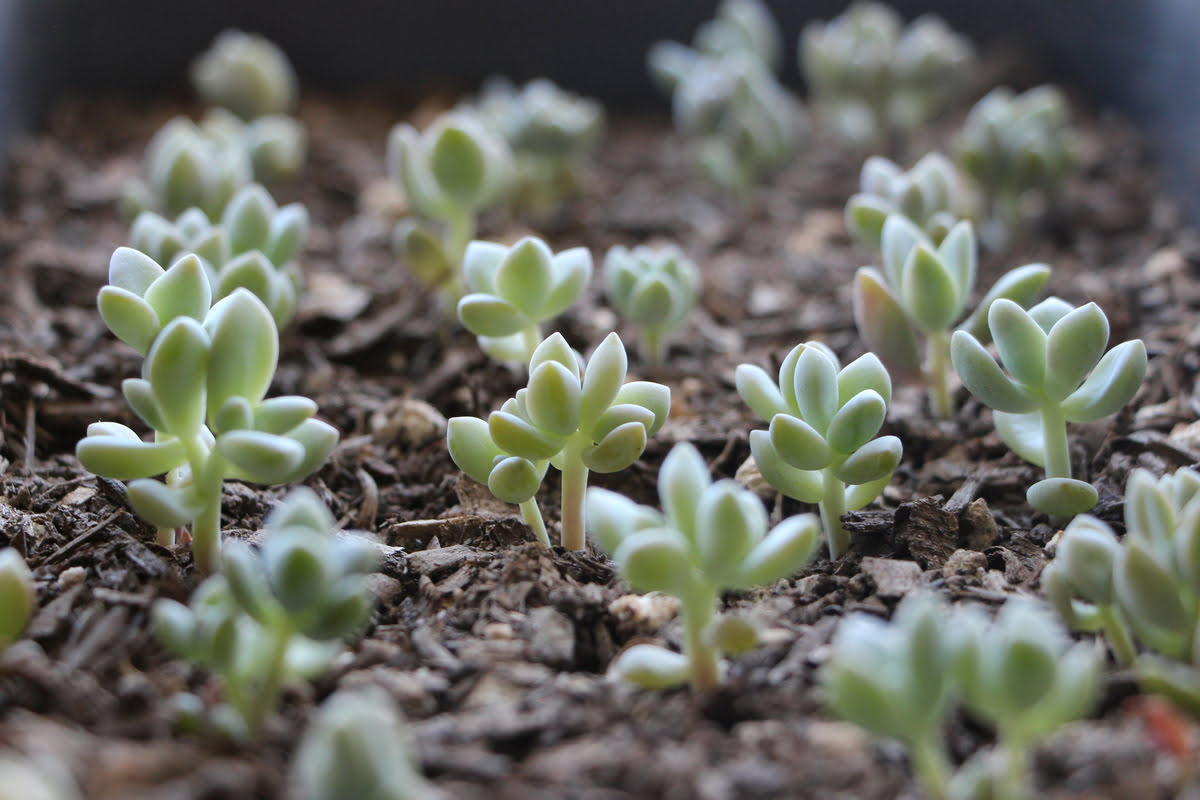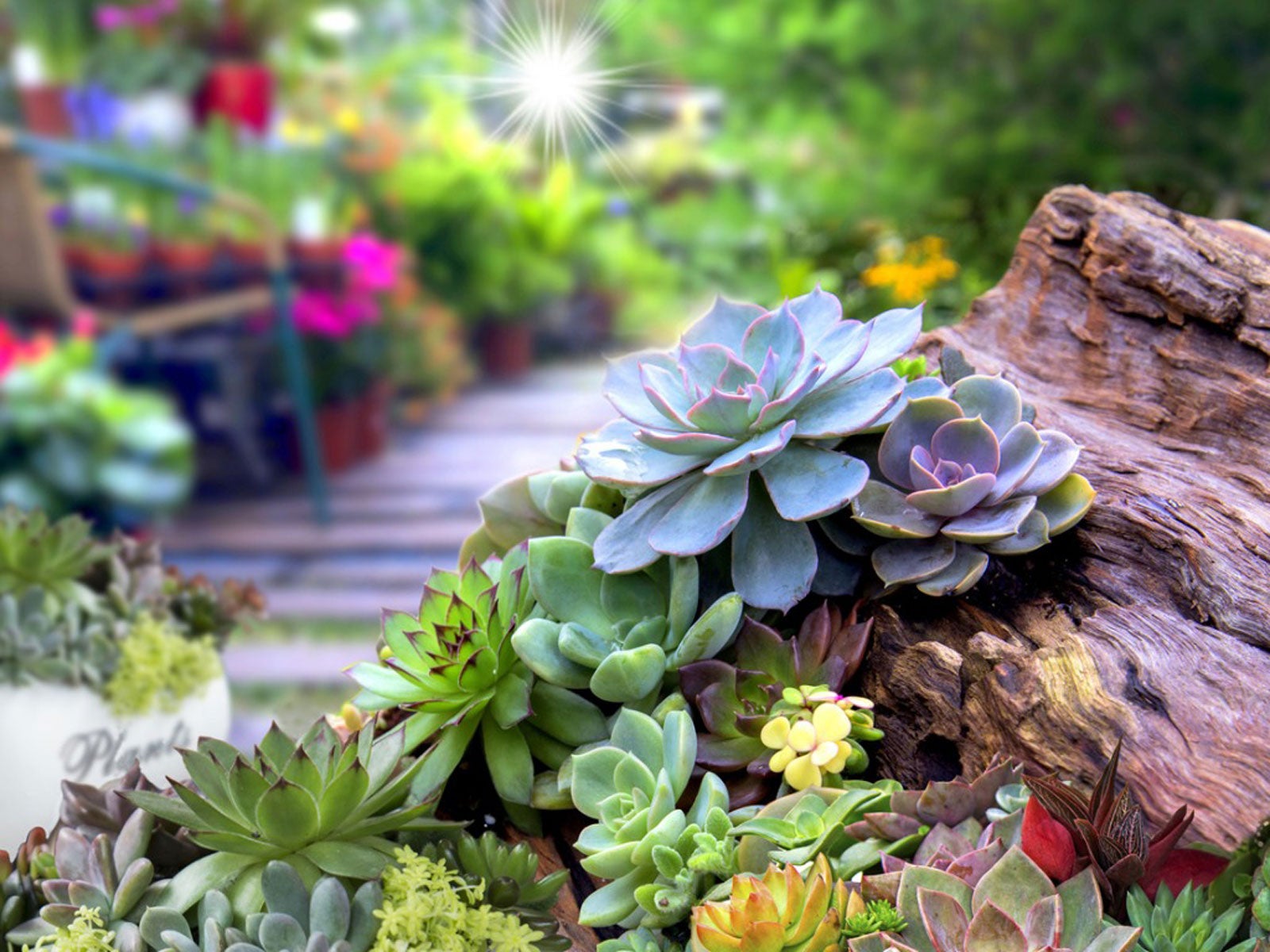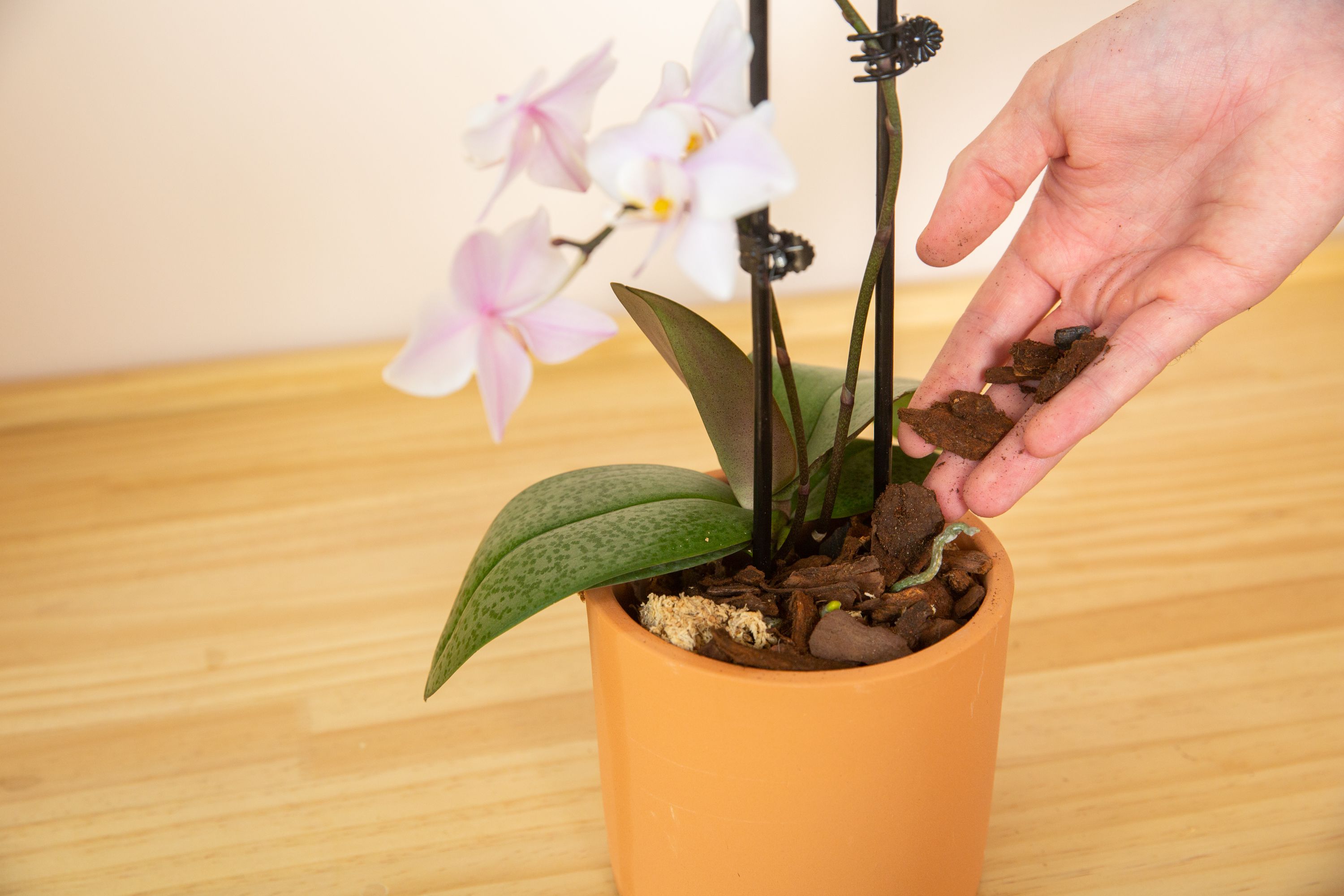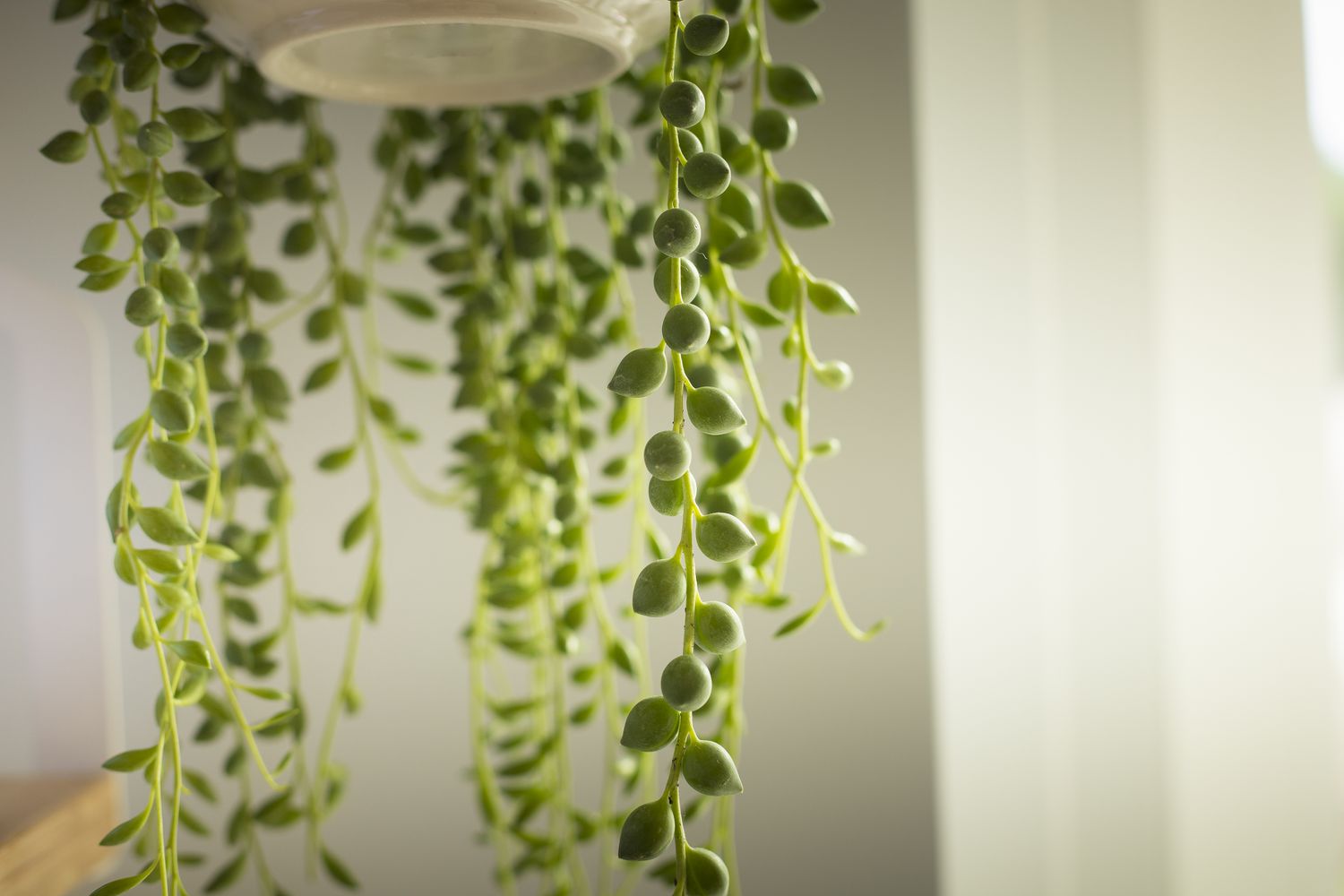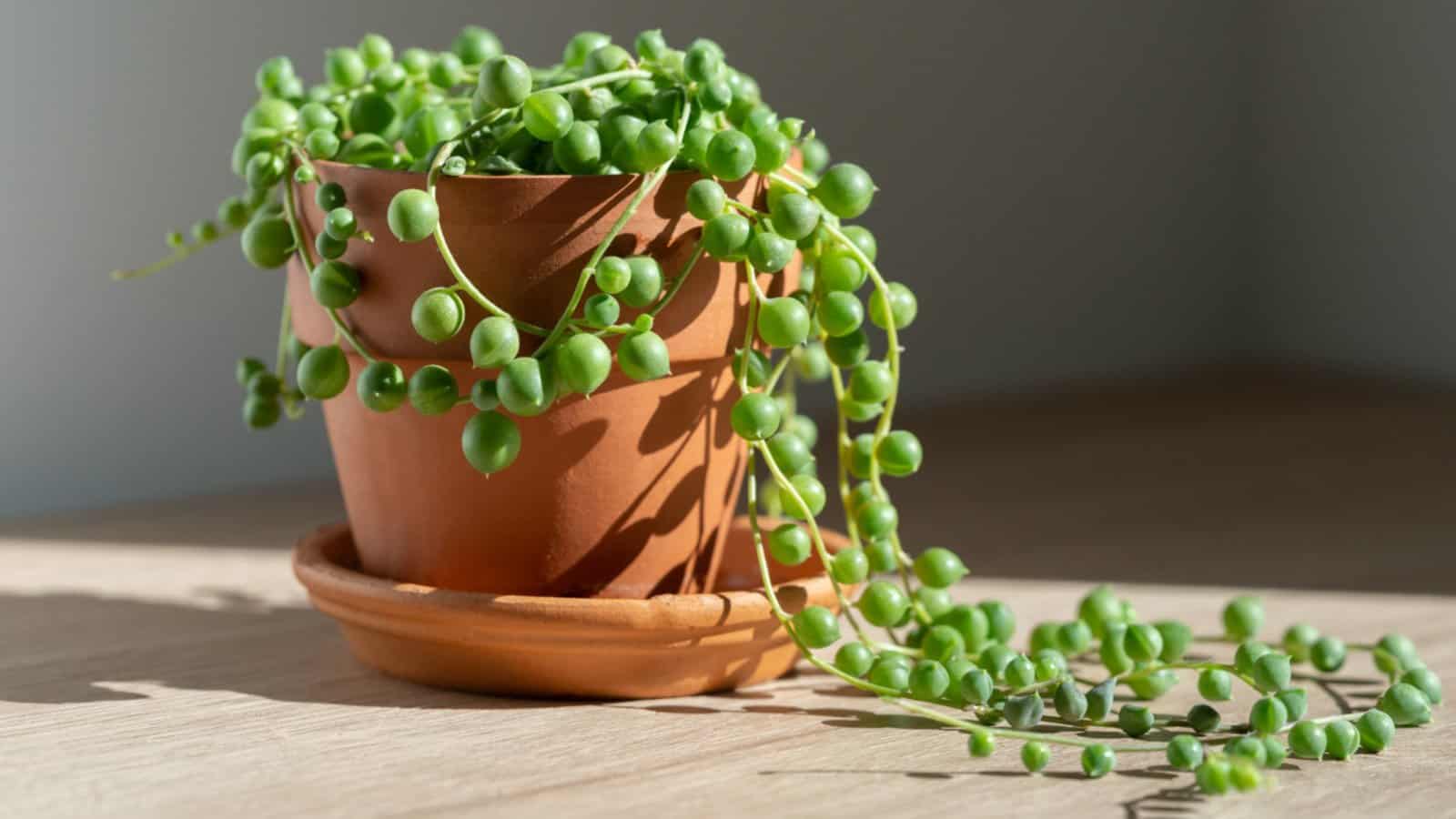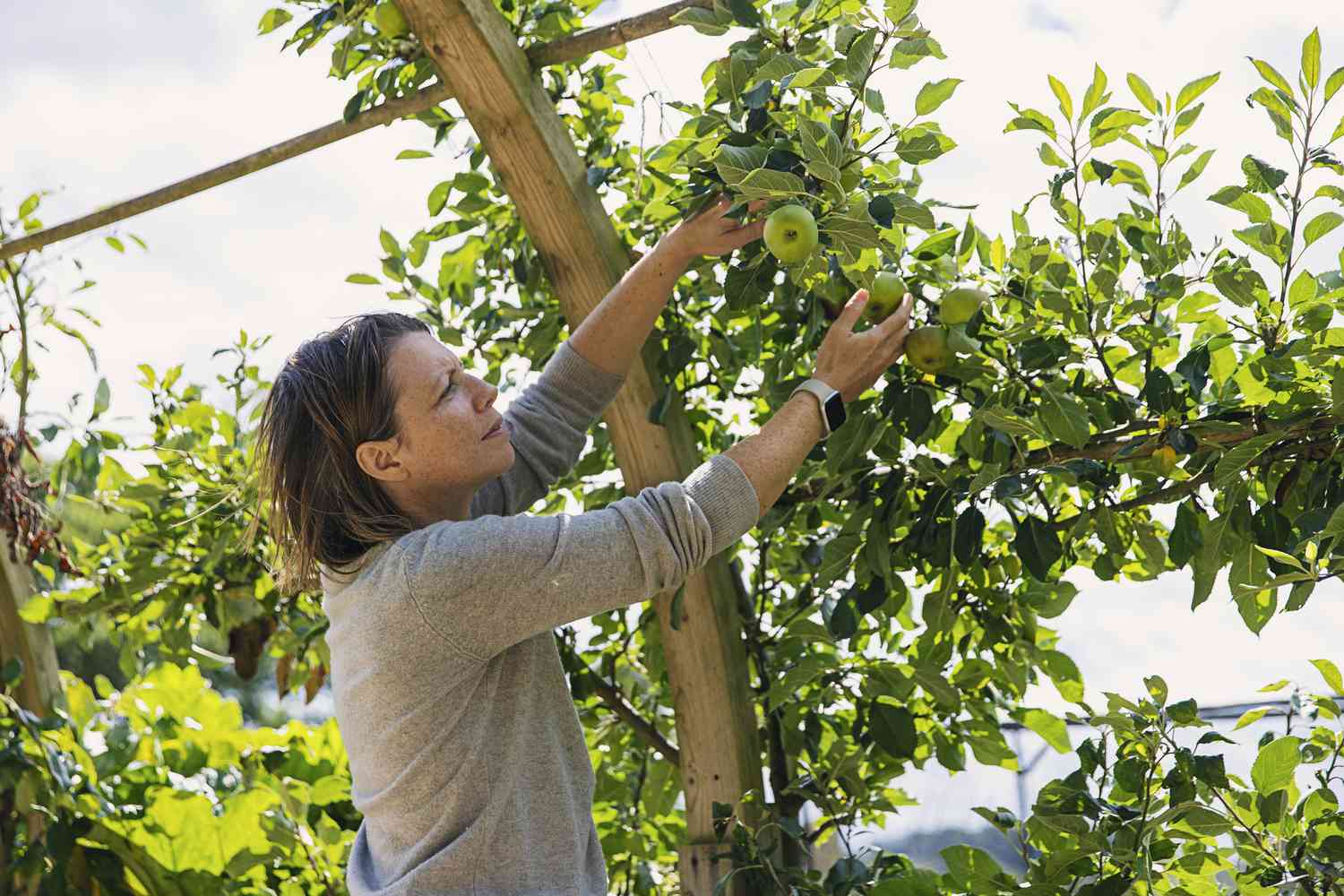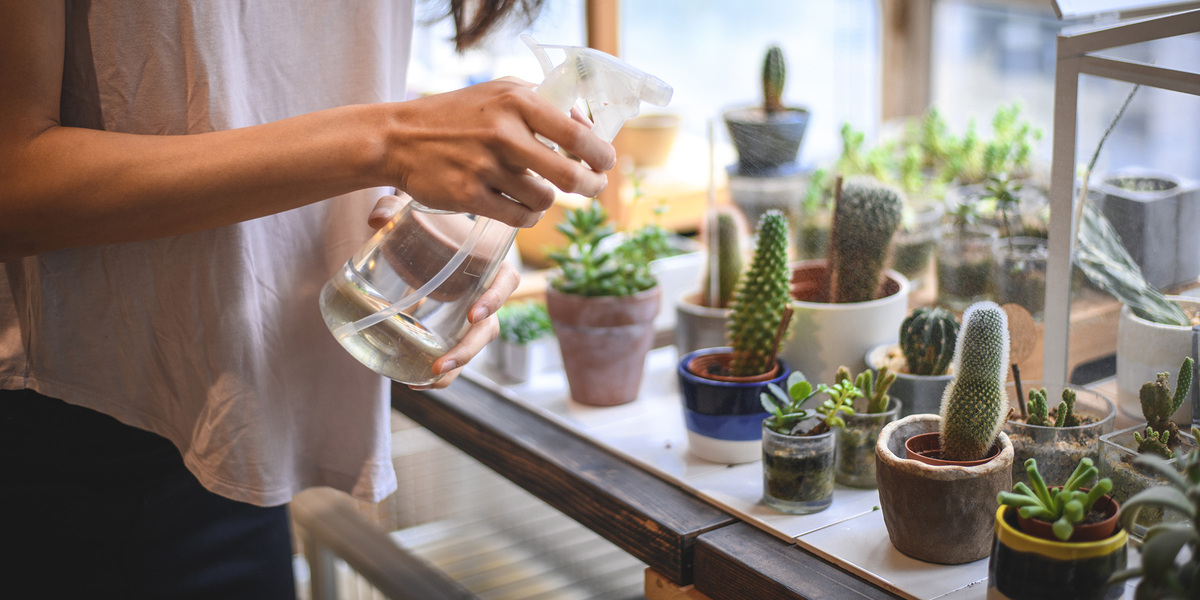Home>Gardening Techniques>Plant Care>How To Take Care Of Baby Succulents


Plant Care
How To Take Care Of Baby Succulents
Modified: February 9, 2024
Learn the essential tips for plant care and how to take care of baby succulents in this comprehensive guide. Ensure the health and growth of your succulents with expert advice.
(Many of the links in this article redirect to a specific reviewed product. Your purchase of these products through affiliate links helps to generate commission for Chicagolandgardening.com, at no extra cost. Learn more)
Table of Contents
Introduction
Welcome to the wonderful world of baby succulents! These tiny plants are not only adorable but also incredibly resilient and low-maintenance. Whether you are a beginner plant parent or a seasoned succulent enthusiast, learning how to properly care for these delicate beauties is key to their long-term success.
Baby succulents, also known as succulent pups, are young offshoots that grow from the base of mature plants. They have all the same characteristics as their parent plants, but in a miniature form. While they may appear small and fragile, with the right care, they will grow into stunning, full-grown succulents.
Proper care for baby succulents involves providing the right environment, including choosing the right pot and soil, ensuring adequate sunlight, watering properly, providing adequate nutrients, and preventing pests and diseases. Additionally, learning about pruning and propagation techniques will help you maintain and expand your succulent collection.
This comprehensive guide will walk you through each step of caring for your baby succulents, from selecting the right pot and soil to troubleshooting common issues. By following these tips, you’ll be well on your way to nurturing thriving succulents that will bring beauty and joy to your space.
Choosing the Right Pot and Soil
The first step in caring for baby succulents is selecting the right pot and soil. The pot you choose should have drainage holes to prevent water from pooling at the roots, which can lead to root rot. Opt for a pot made of terracotta or a porous material that allows excess water to evaporate.
When it comes to soil, succulents require well-draining soil that promotes airflow and prevents the roots from sitting in damp conditions. A good option is a cactus or succulent-specific potting mix, which is formulated to provide the ideal balance of nutrients and drainage. You can also create your own mix by combining regular potting soil with coarse sand or perlite to improve drainage.
Before planting your baby succulent, make sure the pot is clean and free of any debris. Fill the pot with the well-draining soil, leaving enough space at the top to accommodate the roots of your succulent. Gently place the baby succulent in the pot, ensuring that the roots are spread out and covered with soil. Lightly press down the soil to secure the plant in place.
Remember, succulents have shallow root systems, so it’s important to choose a pot that is proportional to the size of your baby succulent. A pot that is too large may retain too much moisture, while a pot that is too small can restrict the growth of the roots.
Once your baby succulent is potted, place it in a location where it can receive adequate sunlight and continue to grow. Now that you have the right pot and soil, let’s move on to the next step in caring for your baby succulent: providing adequate sunlight.
Providing Adequate Sunlight
Sunlight is crucial for the healthy growth of baby succulents. These plants are adapted to thrive in sunny, arid environments, so it’s important to provide them with ample sunlight.
When it comes to sunlight, it’s all about finding the right balance. Baby succulents need plenty of light, but direct, intense sunlight for prolonged periods can actually be harmful to their delicate leaves. Ideally, they should receive around 6 hours of bright, indirect sunlight each day.
If you’re growing your baby succulents indoors, place them near a north or east-facing window where they can receive bright, indirect light. Avoid placing them directly in front of a south or west-facing window, as the intense afternoon sun can scorch their leaves.
If you’re growing your baby succulents outdoors, choose a location where they can receive morning sunlight and partial shade during the hottest part of the day. This can be achieved by placing them under the shade of a tree or using a sheer curtain to filter the sunlight.
It’s important to note that baby succulents will show signs of inadequate sunlight if they are not receiving enough light. These signs include elongated and stretched-out stems and pale, greenish-yellow leaves. If you notice these symptoms, it is a clear indication that your succulents need more light.
On the other hand, if your succulents are exposed to too much sunlight, they may develop sunburned leaves characterized by brown or white patches. If this happens, move your baby succulents to a shadier location and gradually introduce them to more sunlight to avoid shocking their delicate leaves.
Remember to rotate your baby succulents every few weeks to ensure even sun exposure on all sides of the plants. This will prevent them from leaning towards the light and developing an uneven growth pattern.
Now that you understand the importance of providing adequate sunlight, let’s move on to the next step in caring for your baby succulents: watering properly.
Watering Properly
Proper watering is essential for the health and survival of baby succulents. These desert-dwelling plants have adapted to survive in arid conditions, meaning they are more susceptible to root rot caused by overwatering than to drying out.
The key to watering baby succulents is to find the balance between keeping the soil moist enough to support growth but not overly saturated. As a general rule of thumb, allow the top inch of the soil to dry out completely between waterings.
When watering your baby succulents, pour water directly onto the soil around the base of the plant, avoiding getting water on the leaves. This will prevent rot and fungal diseases from developing. Slowly and evenly water the soil until you see water coming out of the drainage holes of the pot.
During the winter months or when the succulents are in a state of dormancy, reduce the frequency of watering. This is because succulents require less water in their dormant stage to avoid overhydration. Be mindful of the signs of dehydration, such as wrinkled or shriveled leaves, which indicate that your succulents need water.
Remember, it’s always better to underwater your baby succulents than to overwater them. Overwatering can lead to root rot and the eventual death of your plants. If you’re unsure about when to water, it’s best to err on the side of caution and wait until the soil is completely dry before watering again.
Lastly, it’s important to note that the frequency of watering will depend on factors such as the climate in your area, the type of succulent you have, and the pot and soil conditions. It’s always a good idea to observe your plants closely and adjust your watering routine accordingly.
Now that you know how to properly water your baby succulents, let’s move on to the next step: fertilizing.
Fertilizing Baby Succulents
While baby succulents are resilient and can thrive in nutrient-deficient soil, fertilizing can help provide them with the necessary nutrients to promote healthy growth and vibrant colors. However, it’s important to approach fertilizing with caution, as succulents are sensitive to excess nutrients.
When it comes to fertilizing baby succulents, less is more. A general rule of thumb is to fertilize them once every three to four months during the growing season, which typically occurs in spring and summer. Avoid fertilizing during the dormant season, as succulents require less nutrients during this time.
Choose a balanced, water-soluble fertilizer specifically formulated for succulents or use a diluted liquid fertilizer. It’s important to dilute the fertilizer to half or even one-quarter of the recommended strength, as succulents are sensitive to high levels of nutrients.
When applying the fertilizer, pour it onto the soil around the base of the plant, being careful not to get it on the leaves. Fertilizing the soil directly ensures that the nutrients are absorbed by the roots and prevents the risk of leaf burn.
Another alternative to chemical fertilizers is using organic options such as compost or worm castings. These natural fertilizers provide slow-release nutrients and help improve the overall soil structure, creating a favorable environment for the succulents to thrive.
Remember, moderation is key when it comes to fertilizing baby succulents. Overfertilizing can lead to excess growth, weak stems, or even plant burn. It’s always better to under-fertilize than to overdo it.
In addition to fertilizing, it’s important to maintain proper care practices such as providing adequate sunlight, watering correctly, and ensuring proper pot and soil conditions. By incorporating these measures, you can ensure that your baby succulents receive the optimal nutrition for healthy and vigorous growth.
Next, let’s explore how to prevent pests and diseases that can affect your baby succulents.
Preventing Pests and Diseases
Keeping your baby succulents free from pests and diseases is crucial for their overall health and vitality. These resilient plants are generally low-maintenance, but they can still fall victim to various pests and diseases if proper precautions are not taken.
One of the most common pests that can affect succulents is mealybugs. These small, white, cotton-like insects often hide in the crevices of the leaves and stems, sucking sap from the plant and causing damage. To prevent infestations, regularly inspect your succulents for any signs of these pests and treat them immediately if found.
Another common pest is the spider mite, which is tiny and can go unnoticed until the plant starts to show signs of damage, such as webbing and yellowing leaves. To prevent spider mite infestations, regularly mist your succulents with water to increase humidity, as these pests thrive in dry conditions.
In addition to pests, succulents are susceptible to fungal and bacterial diseases, especially if they are overwatered or exposed to high humidity. To prevent these diseases, ensure that you provide adequate airflow and avoid overcrowding your succulents. If you notice any signs of disease, such as rotting stems or discolored leaves, promptly remove the affected parts and adjust your watering routine.
It’s also a good practice to periodically clean the leaves of your succulents to remove any dust or debris that can attract pests. Gently wipe the leaves with a soft cloth or use a mild soap solution to keep them clean and healthy.
If you prefer a preventive approach, you can use natural remedies like neem oil, insecticidal soaps, or diluted rubbing alcohol to treat common pests. These methods are effective and less harmful to the environment compared to chemical pesticides.
By regularly inspecting your baby succulents, providing good airflow, maintaining proper watering practices, and promptly treating any pest or disease issues, you can ensure that your plants stay healthy and thriving.
Next, let’s explore the essential techniques of pruning and propagation for maintaining and expanding your succulent collection.
Pruning and Propagation Techniques
Pruning and propagation are essential techniques for maintaining the health and shape of your baby succulents, as well as expanding your succulent collection. Knowing when and how to prune, as well as how to propagate, will help you keep your succulents looking their best and create new plants to enjoy.
To prune your baby succulents, look for any dead, damaged, or yellowing leaves or stems. Using clean and sharp pruning shears or scissors, carefully remove these unwanted parts by making clean cuts near the base of the plant. This will not only improve the appearance of your succulent but also promote air circulation and prevent the spread of diseases.
In addition to removing dead or damaged parts, pruning can also be done to control the size and shape of your succulents. If your baby succulent is becoming leggy or stretching towards the light, you can carefully trim the stem to encourage a more compact and bushy growth pattern.
After pruning, allow the cut ends to dry for a day or two before replanting or propagating. This will help prevent moisture from entering the open wound and potentially causing rot.
Propagation is a fascinating and rewarding process that allows you to create new plants from existing ones. One of the most common methods of propagation for succulents is through stem or leaf cuttings.
For stem cuttings, use clean and sharp scissors to carefully cut a healthy stem from your baby succulent just below a leaf node. Allow the cutting to dry and callus over for a few days before planting it in well-draining soil. Keep the soil slightly moist but not overly wet, and in a few weeks, you will notice new roots starting to form.
Leaf propagation involves gently removing a healthy leaf from the succulent. Allow the leaf to dry and callus over for a few days before placing it on a bed of well-draining soil. Mist the soil lightly to keep it moist, but be careful not to overwater. After a few weeks, small plantlets or new succulents will start to grow from the leaf.
It’s important to note that not all succulents can be easily propagated through leaf or stem cuttings. Some succulents, such as those belonging to the Echeveria or Graptopetalum genus, can be propagated by gently separating the offsets or “pups” that grow at the base of the mother plant.
By mastering the techniques of pruning and propagation, you can not only keep your baby succulents well-maintained but also expand your collection and share the joy of succulent propagation with others.
Next, let’s learn about the importance of monitoring and adjusting your care regimen for optimal succulent health.
Monitoring and Adjusting Care Regimen
Regular monitoring and adjustments to your care regimen are key to ensuring the optimal health and well-being of your baby succulents. While succulents are generally low-maintenance, it’s important to keep an eye on their growth, appearance, and overall condition to address any issues that may arise.
One aspect to monitor is the growth of your baby succulents. Pay attention to the size and shape of the plants, as well as the spacing between leaves. If you notice elongated stems or leaves that appear stretched out, it may be an indication of inadequate sunlight, and you may need to adjust the placement of your plants to a location with more light.
Monitoring the color of the leaves is also important. Healthy baby succulents typically have vibrant, firm leaves. If you notice any discoloration, such as yellowing, reddening, or withering, it could be a sign of nutrient deficiency, overwatering, or pests. Adjust your care regimen accordingly, including adjusting the watering frequency, adding fertilizers or nutrients, or treating pests if necessary.
Another crucial aspect to monitor is the soil moisture. As mentioned earlier, succulents are susceptible to root rot if overwatered. Regularly check the moisture level of the soil by inserting your finger into the soil up to the first knuckle. If it feels damp, refrain from watering until it dries out. Adjust your watering schedule based on the specific needs of your succulents and the prevailing environmental conditions.
As succulents grow, their pot and space requirements may change. As a result, it’s important to monitor their roots to ensure they have enough room to grow and expand. If you notice roots protruding from the drainage holes or densely packed soil, it may be time to repot your baby succulents into a slightly larger container with fresh, well-draining soil.
Additionally, seasonal changes can also impact the care requirements of your baby succulents. In winter, when succulents enter a dormant period, they require less water and may need to be placed in a cooler location with reduced exposure to direct sunlight. During summer, however, they may need more frequent watering and shade protection during the hottest part of the day.
Being attentive to the needs of your baby succulents and making adjustments to their care regimen as needed will ensure that they thrive and remain healthy. Remember, each succulent may have slightly different care requirements, so it’s important to observe and customize your care practices accordingly.
Lastly, let’s explore some common issues that may arise while caring for baby succulents and how to troubleshoot them.
Troubleshooting Common Issues
While baby succulents are generally resilient plants, they can face certain issues that may impact their growth and overall health. By understanding these common problems and knowing how to troubleshoot them, you can effectively address any issues that arise and ensure the well-being of your succulents.
One common issue that succulents may face is root rot, which occurs when the roots are constantly exposed to excessive moisture. To prevent root rot, make sure your succulents are planted in well-draining soil and avoid overwatering. If you notice any signs of root rot, such as soft and mushy roots, immediately remove the affected parts and repot the plant in fresh soil.
Another issue is under-watering, which can cause succulents to become dehydrated and shriveled. If you notice that your baby succulents have wrinkled leaves or stems, it’s a sign that they need more water. Adjust your watering schedule accordingly, making sure to thoroughly saturate the soil when watering and allowing it to dry out completely between waterings.
Overexposure to sunlight can also be problematic for succulents, leading to sunburn. If you notice brown or white patches on the leaves, it’s an indication of sunburn. Move your baby succulents to a spot with filtered or indirect sunlight, gradually reintroducing them to brighter light to avoid further damage.
Pests can also pose a threat to succulents, with mealybugs and spider mites being common culprits. If you spot any signs of pests, such as webbing, sticky residue, or tiny insects, promptly treat your succulents with natural remedies like neem oil or insecticidal soap. Regularly inspect your plants and isolate any infested ones to prevent the pests from spreading.
Lastly, succulents may occasionally suffer from nutrient deficiencies, which can manifest as pale or yellowing leaves. In such cases, you may want to adjust your fertilizing routine by using a balanced fertilizer specifically formulated for succulents. Take care not to over-fertilize, as this can lead to nutrient burn and further damage the plant.
By closely monitoring the condition of your baby succulents and promptly addressing any issues that arise, you can ensure their health and longevity. Each succulent is unique, so be observant and adjust your care practices accordingly to help them thrive.
Now that you are equipped with troubleshooting knowledge, you can confidently care for your baby succulents and enjoy their beauty and charm.
Conclusion
Caring for baby succulents is a rewarding and enjoyable experience. These resilient plants bring beauty and vibrancy to any space, and with proper care, they can thrive and grow into stunning succulents.
In this comprehensive guide, we have explored all the essential aspects of baby succulent care. From choosing the right pot and soil to providing adequate sunlight, watering properly, fertilizing, preventing pests and diseases, and mastering pruning and propagation techniques, you now have all the tools and knowledge to successfully care for your baby succulents.
Remember to monitor your succulents closely, making adjustments to their care regimen as needed. Each succulent is unique, so paying attention to their growth, appearance, and overall condition is vital in ensuring their health and well-being.
If you encounter any issues along the way, such as root rot, under-watering, sunburn, pests, or nutrient deficiencies, don’t worry. Troubleshooting these common problems is part of the learning process. By promptly addressing these issues, you can help your succulents recover and stay healthy.
Take the time to enjoy the process of caring for your baby succulents. Observe their growth, propagate new plants, and share the joy of succulent care with others. The journey of nurturing these amazing plants will not only bring you satisfaction but also provide a sense of connection to the natural world.
Now, armed with the knowledge gained from this guide, go forth and create a flourishing succulent garden filled with beauty and serenity.
